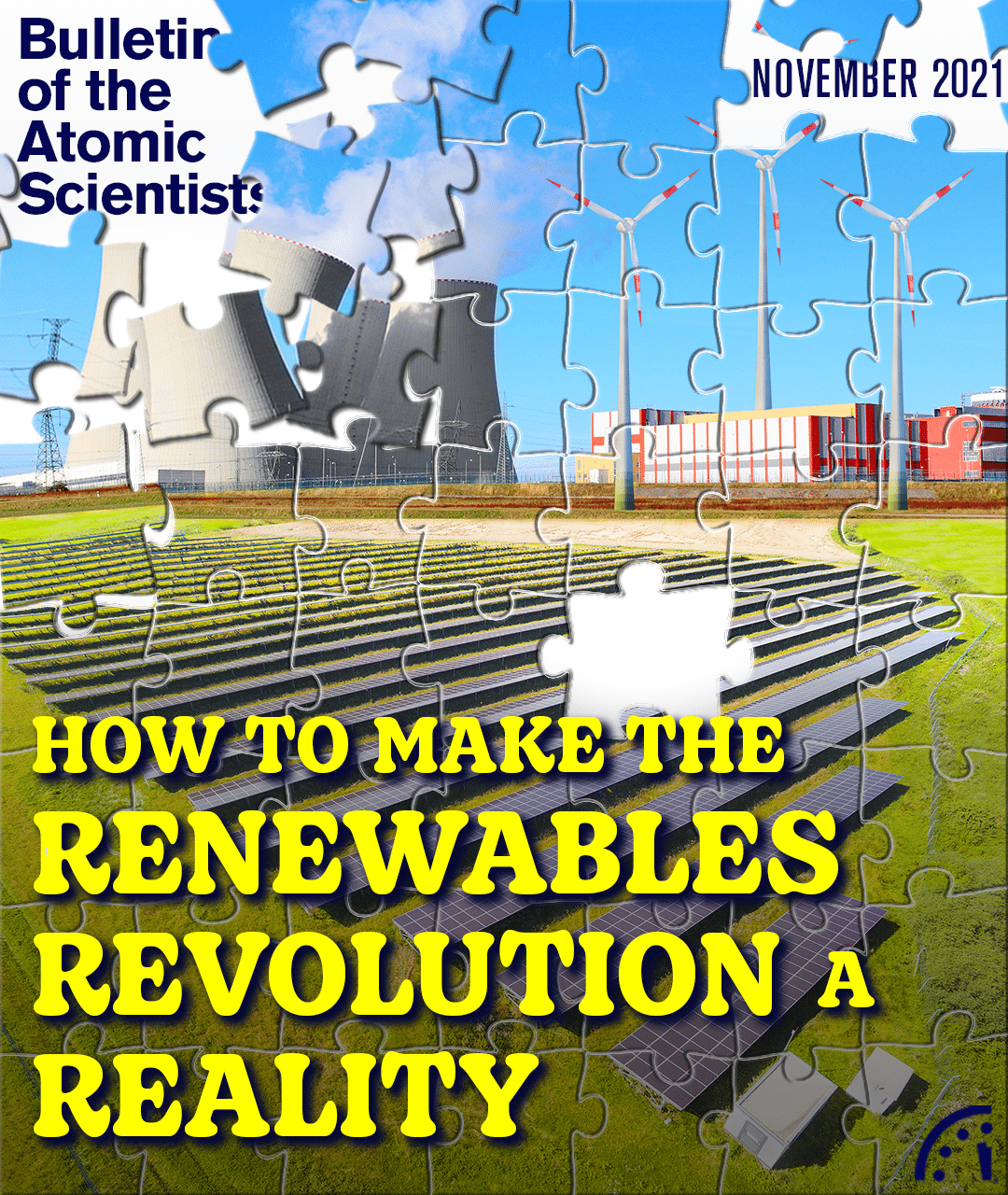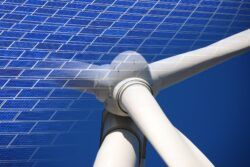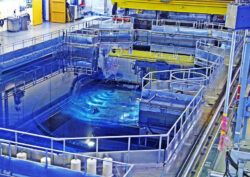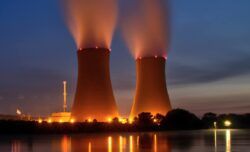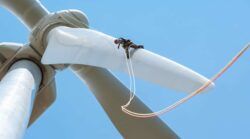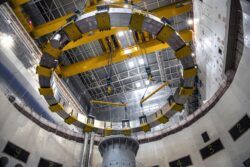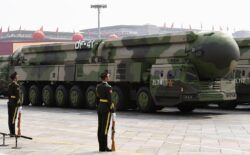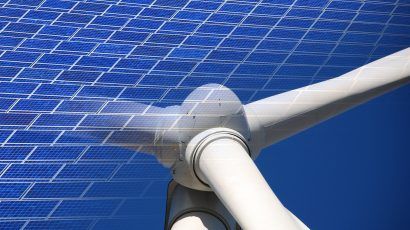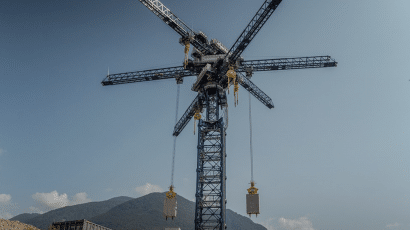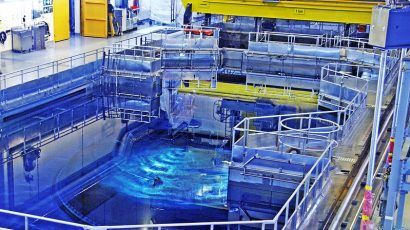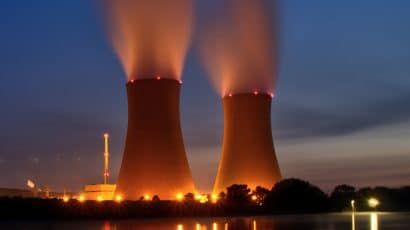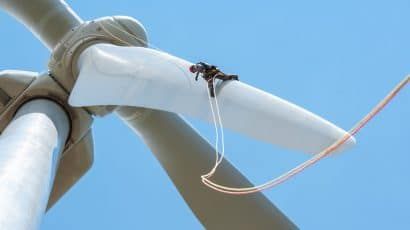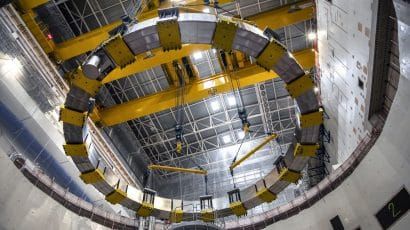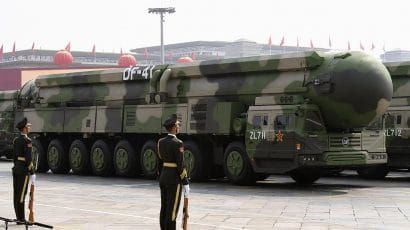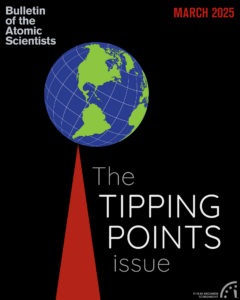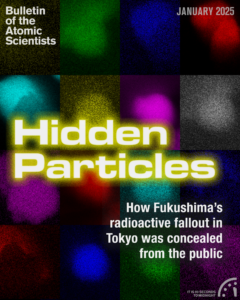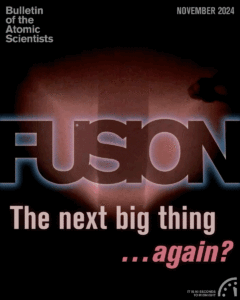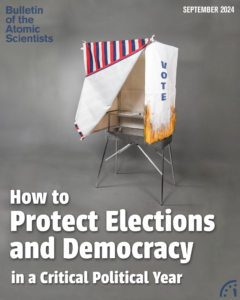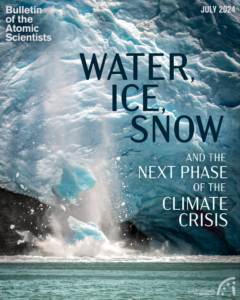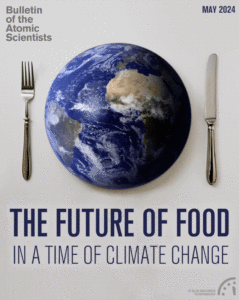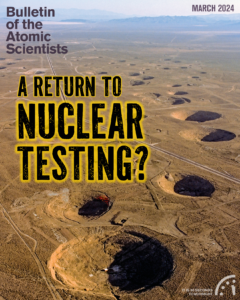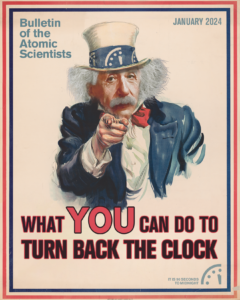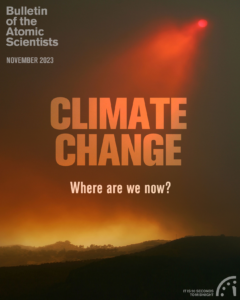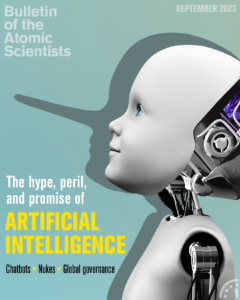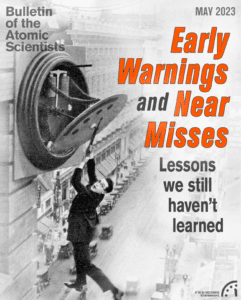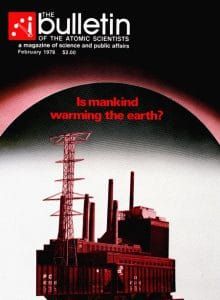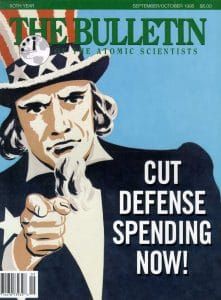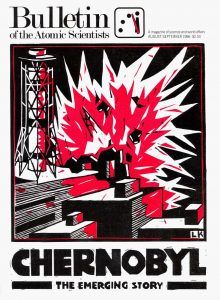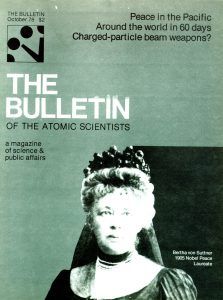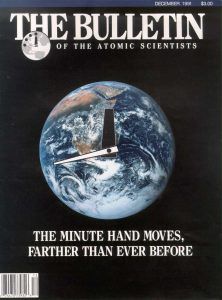DIGITAL MAGAZINE
November 2021
DIGITAL MAGAZINE
November 2021
How the renewables revolution can move from catchphrase to reality
COP26 and the national commitments to be made there are important, if the world is to avert the worst effects of climate change. Even more important, though, are practical implementations of those commitments, so they actually create a massive, real-world transition of global energy systems.
The five things that must happen for renewables to fit into the grid: Interview with Greg Nemet
The author of How Solar Became Cheap: A Model for Low-Carbon Innovation, discusses what needs to be done to truly integrate renewable energy into the US electrical and decarbonize the country.
Long-duration energy storage for reliable renewable electricity: the realistic possibilities
Several American states mandate zero-carbon electricity systems based primarily on renewable technologies such as wind and solar power. Reliable and affordable electricity systems based on these variable resources may depend on the ability to store large quantities of low-cost energy over long timescales. Long-duration storage technologies (that is, those that provide from 10 to hundreds of hours of storage) have much cheaper energy storage capital costs than lithium-ion batteries. Long-duration storage plays unique roles, such as seasonal and multi-year storage, that increase the affordability of electricity from variable renewable energy. We compare realistic options for long-duration energy storage, including underground hydrogen, pumped hydro, pumped thermal, and compressed air systems. To make 100 percent renewable electricity reliable and more affordable, such long-duration storage technologies can be employed.
Nuclear fear: the irrational obstacle to real climate action
History instructs us that electrical power can be decarbonized in less than a dozen years with combinations of renewable and nuclear energy, but exaggerated fears of the latter have made it too costly and unpopular to develop and deploy in much of the world, allowing Russia and China to capture the nuclear export market. If humanity is genuinely serious about rapid decarbonization to avoid the worse health and climate risks, it will need to take steps to rapidly improve and deploy both nuclear and renewable energy.
Is nuclear power sustainable in a carbon-free world? The case of Sweden.
Politicians and the public alike doubt the ability of nuclear power in the United States to compete as a significant low-carbon emission contributor to electricity production in a fully decarbonized electricity sector. Establishing whether or not these doubts are justified is challenged by the complexity of the highly disaggregated US electricity markets, including the highly varied mix of subsidies, production credits, and power purchase mandates that exist at the individual state level. The authors focus on answering the question of nuclear power’s competitiveness by examining the electricity market of Sweden, a nation which has already fully decarbonized its electricity sector, basing its electricity generation entirely on a mix of hydroelectric power, nuclear power, and the use of biofuels, with much smaller contributions from renewables such as solar PV and wind-generated power. In this market, nuclear power is an effective competitor against renewable power generation.
Nuclear energy: a distraction on the road to climate solutions
Much needs to happen, and happen quickly, to avoid the worst climate catastrophes.
Despite its low-carbon virtues, nuclear energy is anything but quick. At its best, nuclear energy might provide some load-balancing ballast for renewable energies; at its worst, it will slow the transition to a net-zero emissions future and should therefore be trimmed from our set of options. Continuing to support nuclear energy at the expense of faster and cheaper alternatives for cutting greenhouse gas emissions is a losing strategy.
Offshore wind: Poised for the big time. An interview with Anthony Kirincich
What the United States can and cannot learn about windmills from Europe, long the world leader in this form of renewable energy.
Fusion’s role in fighting climate change
It is unlikely that fusion will contribute in a major way to President Biden’s goal of decarbonizing US electrical energy production by 2035. However, between 2035 and 2100, the worldwide demand for energy is expected to climb fourfold. To meet this demand while not driving global warming, low-carbon energy sources such as fusion will need to be used on a growing scale.
Bombs, science, and baby teeth
How many nuclear weapons can be detonated in support of weapons development or during a war before imperiling humans from radioactive fallout? That’s the question the Atomic Energy Commission asked in the 1950s. To find the answer, scientists, citizens, and later the St. Louis Committee for Nuclear Information looked at baby teeth where strontium 90—a radioactive isotope—is absorbed as if were calcium. The work combined scientific research with a political movement aimed at ending the nuclear arms race. It also played a role in the ratification of the 1963 Limited Test Ban Treaty. The wisdom and extraordinary effort of preserving these baby teeth for some 60 years later opened doors for cutting-edge research involving an array of pollutants.
Nuclear Notebook: Chinese nuclear forces, 2021
This Nuclear Notebook examines China’s nuclear arsenal, which has now surpassed France’s as the world’s third largest. The authors estimate that China's stockpile now includes roughly 350 operational warheads with more in production. The stockpile is projected to increase further in the next decade but remains significantly smaller than that of Russia or the United States.
The five things that must happen for renewables to fit into the grid: Interview with Greg Nemet
The author of How Solar Became Cheap: A Model for Low-Carbon Innovation, discusses what needs to be done to truly integrate renewable energy into the US electrical and decarbonize the country.
Long-duration energy storage for reliable renewable electricity: the realistic possibilities
Several American states mandate zero-carbon electricity systems based primarily on renewable technologies such as wind and solar power. Reliable and affordable electricity systems based on these variable resources may depend on the ability to store large quantities of low-cost energy over long timescales. Long-duration storage technologies (that is, those that provide from 10 to hundreds of hours of storage) have much cheaper energy storage capital costs than lithium-ion batteries. Long-duration storage plays unique roles, such as seasonal and multi-year storage, that increase the affordability of electricity from variable renewable energy. We compare realistic options for long-duration energy storage, including underground hydrogen, pumped hydro, pumped thermal, and compressed air systems. To make 100 percent renewable electricity reliable and more affordable, such long-duration storage technologies can be employed.
Nuclear fear: the irrational obstacle to real climate action
History instructs us that electrical power can be decarbonized in less than a dozen years with combinations of renewable and nuclear energy, but exaggerated fears of the latter have made it too costly and unpopular to develop and deploy in much of the world, allowing Russia and China to capture the nuclear export market. If humanity is genuinely serious about rapid decarbonization to avoid the worse health and climate risks, it will need to take steps to rapidly improve and deploy both nuclear and renewable energy.
Is nuclear power sustainable in a carbon-free world? The case of Sweden.
Politicians and the public alike doubt the ability of nuclear power in the United States to compete as a significant low-carbon emission contributor to electricity production in a fully decarbonized electricity sector. Establishing whether or not these doubts are justified is challenged by the complexity of the highly disaggregated US electricity markets, including the highly varied mix of subsidies, production credits, and power purchase mandates that exist at the individual state level. The authors focus on answering the question of nuclear power’s competitiveness by examining the electricity market of Sweden, a nation which has already fully decarbonized its electricity sector, basing its electricity generation entirely on a mix of hydroelectric power, nuclear power, and the use of biofuels, with much smaller contributions from renewables such as solar PV and wind-generated power. In this market, nuclear power is an effective competitor against renewable power generation.
Nuclear energy: a distraction on the road to climate solutions
Much needs to happen, and happen quickly, to avoid the worst climate catastrophes.
Despite its low-carbon virtues, nuclear energy is anything but quick. At its best, nuclear energy might provide some load-balancing ballast for renewable energies; at its worst, it will slow the transition to a net-zero emissions future and should therefore be trimmed from our set of options. Continuing to support nuclear energy at the expense of faster and cheaper alternatives for cutting greenhouse gas emissions is a losing strategy.
Offshore wind: Poised for the big time. An interview with Anthony Kirincich
What the United States can and cannot learn about windmills from Europe, long the world leader in this form of renewable energy.
Fusion’s role in fighting climate change
It is unlikely that fusion will contribute in a major way to President Biden’s goal of decarbonizing US electrical energy production by 2035. However, between 2035 and 2100, the worldwide demand for energy is expected to climb fourfold. To meet this demand while not driving global warming, low-carbon energy sources such as fusion will need to be used on a growing scale.
Bombs, science, and baby teeth
How many nuclear weapons can be detonated in support of weapons development or during a war before imperiling humans from radioactive fallout? That’s the question the Atomic Energy Commission asked in the 1950s. To find the answer, scientists, citizens, and later the St. Louis Committee for Nuclear Information looked at baby teeth where strontium 90—a radioactive isotope—is absorbed as if were calcium. The work combined scientific research with a political movement aimed at ending the nuclear arms race. It also played a role in the ratification of the 1963 Limited Test Ban Treaty. The wisdom and extraordinary effort of preserving these baby teeth for some 60 years later opened doors for cutting-edge research involving an array of pollutants.
Nuclear Notebook: Chinese nuclear forces, 2021
This Nuclear Notebook examines China’s nuclear arsenal, which has now surpassed France’s as the world’s third largest. The authors estimate that China's stockpile now includes roughly 350 operational warheads with more in production. The stockpile is projected to increase further in the next decade but remains significantly smaller than that of Russia or the United States.
Subscribe now
We've relaunched the Bulletin's award-winning digital magazine. Get access to every issue and our archive going back to 1945.
Magazine archive

Premium subscribers can read the complete Bulletin of the Atomic Scientists’ archive, which contains every article published since our founding in 1945.
This archive was created in honor of John A. Simpson, one of the Bulletin’s principal founders and a longtime member of its Board of Sponsors. This searchable archive provides exclusive online access to original interviews and commentary by luminaries like Albert Einstein, J. Robert Oppenheimer, Ruth Adams, John F. Kennedy, Stephen Hawking, Christine Todd Whitman, US Secretary of Defense William J. Perry, and multiple Nobel laureates.
